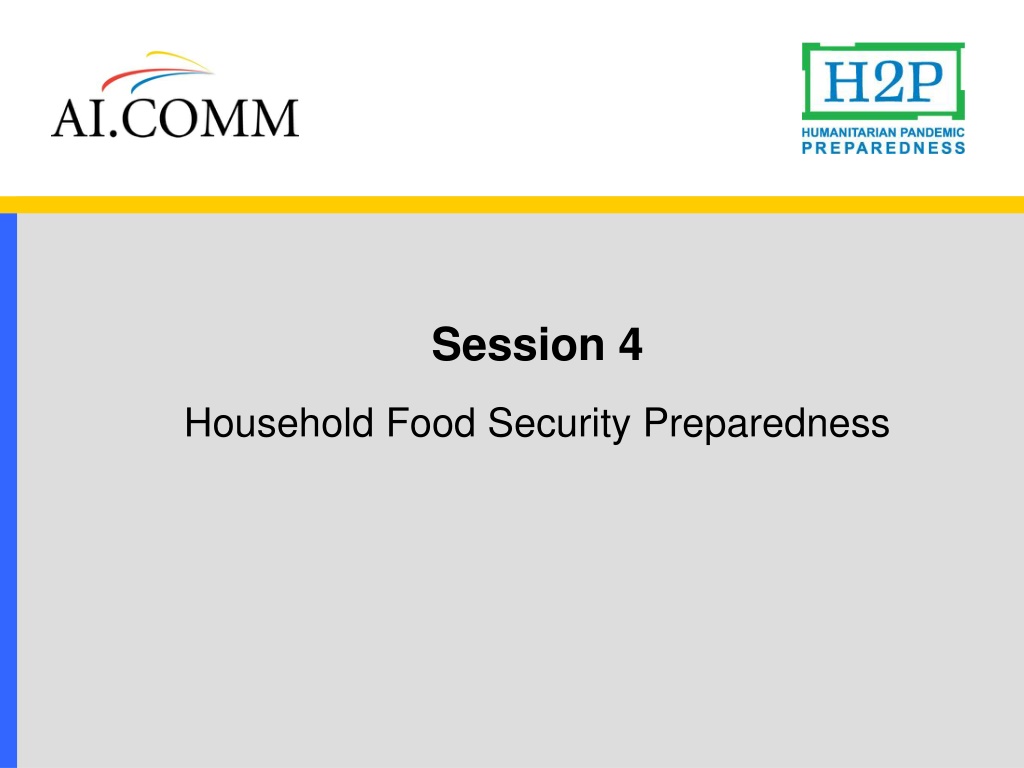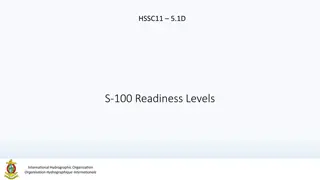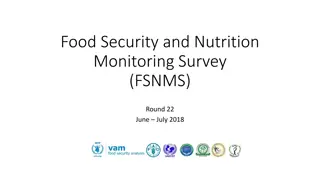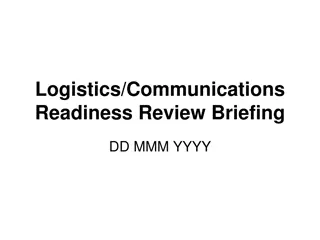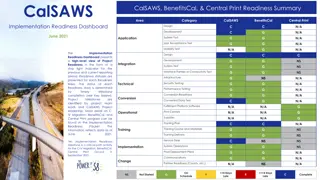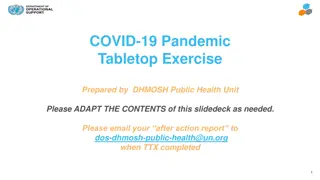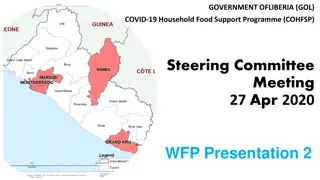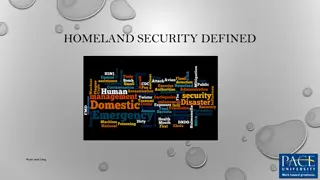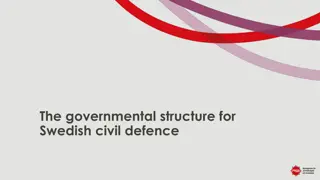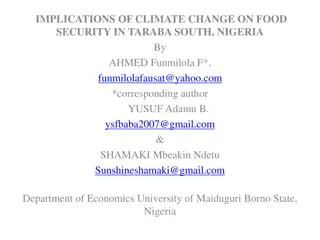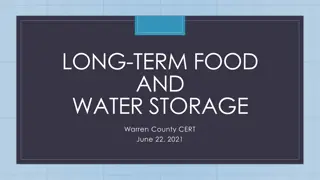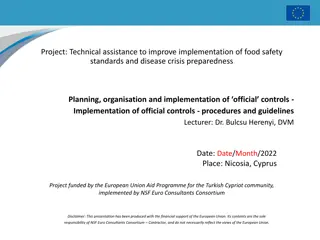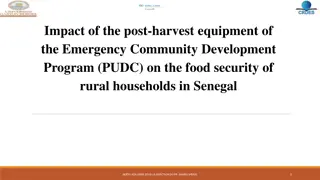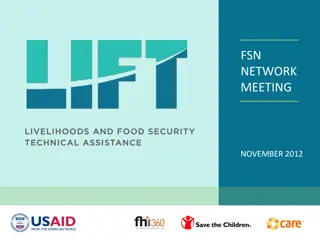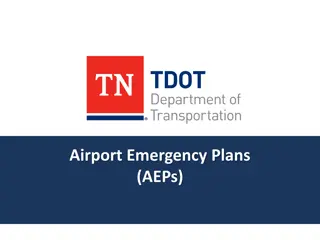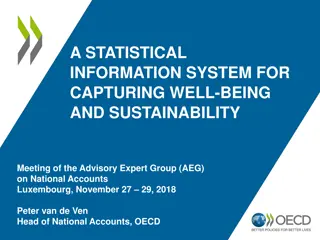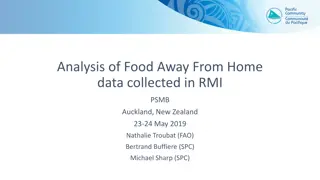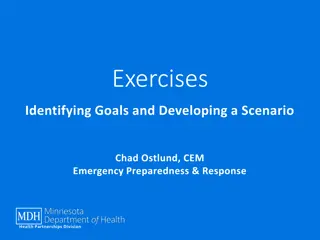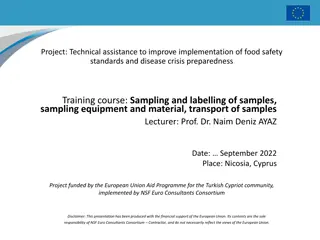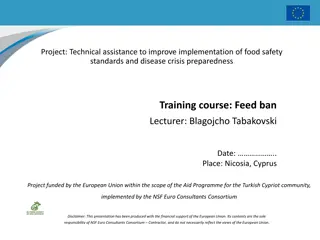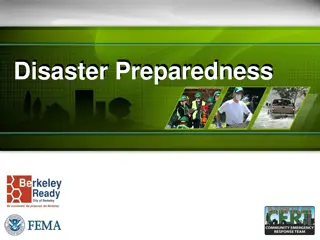Household Food Security Preparedness: Essential Tips for Pandemic Readiness
Understanding the critical importance of household preparedness for food security during a pandemic is key. With the potential for shortages and disruptions in income, it is vital for households to proactively take steps to secure food, water, and cash resources. Raising awareness through community outreach and supporting households in managing and surviving a pandemic are crucial elements in ensuring resilience. Practical tips such as storing non-perishable, affordable, and nutritious foods, as well as beginning preparations early, can make a significant difference in navigating challenging times.
Download Presentation

Please find below an Image/Link to download the presentation.
The content on the website is provided AS IS for your information and personal use only. It may not be sold, licensed, or shared on other websites without obtaining consent from the author. Download presentation by click this link. If you encounter any issues during the download, it is possible that the publisher has removed the file from their server.
E N D
Presentation Transcript
Session 4 Household Food Security Preparedness
Todays Objectives To understand that in addition to health and social distancing messages, critical food security messages must be shared with households during a pandemic. To understand how community and response leaders can increase public awareness of the necessity to prepare for food, water, and cash shortages before a pandemic strikes
Why are household preparedness activities important? Many households will only be aware of how a pandemic may impact health; they may not be considering the impact on food security and livelihoods. National governments, international organizations, NGOs and CBOs will likely be overwhelmed and unable to provide sufficient assistance
Raising Household Awareness Organize public meetings, radio & TV interviews, bulletins, to increase public awareness about a pandemic s possible impact on food security and overall household well-being.
Support community outreach Community outreach will be necessary to increase the ability of HH to manage and survive in a pandemic. Outreach representatives will provide guidance on four key preparedness actions. Prepare for food shortages Prepare for shortages of water Prepare for disruptions in income Strengthen neighborhood support systems
Increase HH ability to manage and survive a pandemic Three general categories of HH Group 1: Can stockpile and prepare on a moment s notice Group 2: Can stockpile and prepare by putting aside a little bit at a time, perhaps with a small bit of assistance. Group 3: Struggle with hunger and poverty every day.
HH ACTION #1: Prepare for food shortages When should households begin to establish emergency stocks? AS SOON AS POSSIBLE ! Why ? Avoid price hikes and shortages How? Accumulate a little bit at a time Start growing your own food
What types of foods should be stored? Foods that will not spoil Foods that are relatively affordable Foods that are capable of meeting the nutritional needs of household members over an extended period of time
Recommended nonperishable foods Recommended non-perishable foods to store at home Fruits and Vegetables Tubers Dried fruits and vegetables Canned vegetables, fruit, tomatoes Canned/bottled 100% fruit juice Tomato sauce Shelf Stable Milk Infant formula (if the mother is not breastfeeding) Non-fat dry milk Dehydrated milk Canned evaporated milk Miscellaneous Foods Canned or jarred baby food Dehydrated and canned soup Chili or Stew Condiments, sugar Protein Dried beans and peas Dried meats Canned fish and meats Tuna Peanut butter Grains Rice Corn Wheat Flour Pasta Cereal Oatmeal Whole grain crackers Instant baby rice cereal Fats Cooking oil
How much food is enough? Food Quantity for 12 weeks 1 adult 35 kg 5 kg 3kg (3-4 liters) 84 cans/ 6kg dried 84 cans/ 6kg dried Average nutritional requirement for an adult is 2100 calories per day Mostly complex carbohydrates 10-12% protein 17 % fat Essential micronutrients Grains Protein Fats (oil) Vegetables Fruits Sugar Salt 1.25 kg 1.25 kg
How much food is too much ? People who are better off may begin to hoard food in fear and panic. Hoarding makes less food available leads to higher food prices Public awareness campaigns must remind HHs that by hoarding too much, they risk contributing to a neighbor s hunger and suffering.
HH ACTION #2: Prepare for shortages of safe water As illness spreads, # of workers that maintain public works may decrease Water quality and quantity may deteriorate Healthy adults can only live 3-4 days without water Alert HH before the pandemic arrives about the risk of water shortages.
How much water should HHs store? Drinking water Basic hygiene practices Basic cooking needs Total water needed per person/per day 2.5 -3 liters per person/ per day 2-6 liters per person/ per day 3-6 liters per person/per day 7.5 -15 liters
How can HHs safely treat water? Boiling Chlorination Iodine Purification tablets Filtration Solar disinfection
How can HHs safely store water? Do not use containers that have previously been used to store non-food products. Store drinking water separately from water used for personal hygiene needs. Store drinking water in narrow-mouthed, lidded containers to help to prevent contamination.
HH ACTION #3: Prepare for income disruptions Households may have less cash available due to: work absenteeism: illness, caregiving, social distancing measures, transportation disruptions disruptions in banking systems ( no money in ATMs Reduced remittances More money spent on health care or funeral expenses Reduced available credit
HH ACTION #3: Prepare for income disruptions Help households prepare for cash shortages by encouraging: Individual savings and savings groups Barter Trading one kind of food for another Providing a needed service or goods that are normally sold in exchange for food Loaning unused land to a neighbor who does not have enough land to plant a garden
HH ACTION #4: Strengthen neighborhood support systems Ability to bounce back after a pandemic wave can hinge on strong and organized social networks. If networks are not cohesive, communities are at risk of civil disorder, conflicts, & riots. Neighborhood support systems are a good source of information for identifying vulnerable and isolated HHs Strong neighborhood networks are more likely to organize volunteer response efforts that help a community survive as a whole.
Once the pandemic virus arrives in your region There are the critical Food Security messages that response teams should begin broadcasting using all available communication channels the moment the WHO announces that there is a regional outbreak. These messages can help save lives even if households have not had a chance to prepare.
Critical FS messages during a pandemic Eat food that will spoil first Preserve any surplus fresh food to prevent spoiling. Regulate the food you eat each day so that what you have on hand will last 6 to 12 weeks do not threaten daily nutritional needs of any HH member. Organize exchanges among neighbors using social distancing measures so that you are able to increase the variety of foods you eat
Critical FS messages during a pandemic Collect and store water in covered containers (water supplies may become scarce) Do not store water in containers that have been used to store nonfood products. Buy household bleach, purification tablets, or iodine to purify water if sources become contaminated.
Critical FS messages during a pandemic Only spend cash on items absolutely necessary to keep your household healthy for 6 to 12 weeks. Food Water Cooking fuel Medical supplies
